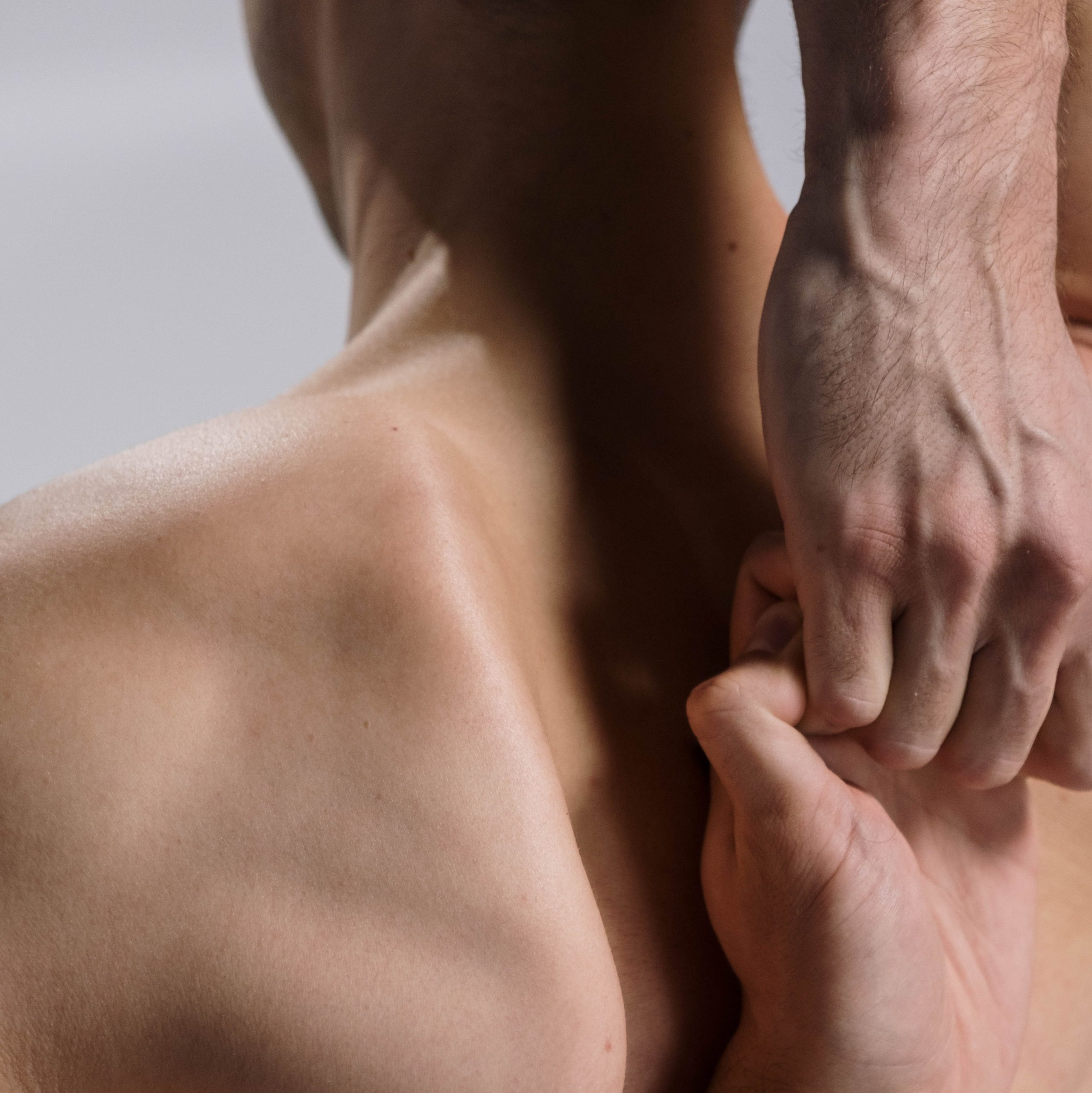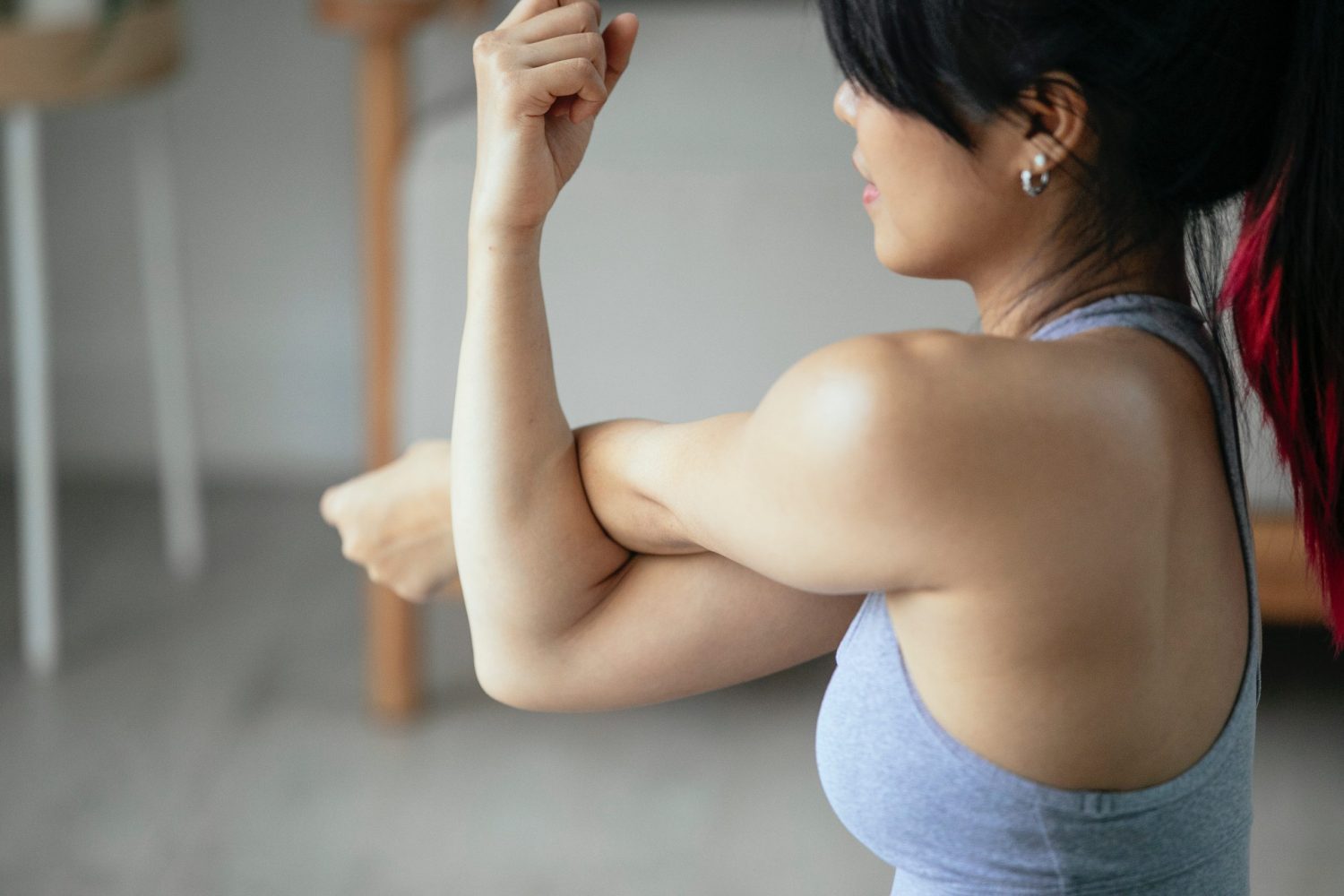10 Stretches to Release Tightness in Shoulder
You might not think about it much, but your shoulder is a complex part of your body and shoulder stretches are an excellent way to keep them loose. Your shoulder has big responsibilities: to help control your arm as it moves up, down, forward, backward, and to the side, all while keeping the joint stable and secure as your arm rotates.
To do that, your shoulder contains seven primary muscles and many tendons, all of which can feel tense and tight after everyday activities.
To help reduce tightness, it’s important to stretch these shoulder muscles regularly. Learn more about what causes shoulder tightness and how to do the most effective shoulder stretches for dealing with it.
Common Causes of Tight Shoulders
Shoulder pain and tightness can stem from a variety of causes, from doing strenuous exercise and physical labor to simply sleeping with poor posture. It could just be that your shoulder muscles—which are often underworked—weren’t quite ready for a whole weekend of spring cleaning or volunteering at the kids’ sports tournament, and now you’re left feeling tired, sore, and stiff. Taking steps to address tightness in the shoulder through stretches and relaxation techniques can aid in easing discomfort and promoting better shoulder mobility and overall well-being.
And while it might seem contradictory, one of the main causes of shoulder tightness is sitting for long periods. How does sitting make your shoulders tight? The issue isn’t just sitting; it’s sitting with poor posture.
Hunching over a cell phone or laptop for hours per day puts your head at an angle, which puts constant tension on your neck, shoulders, and back muscles to support your spine. Then, you wind up with tension and tightness all around your shoulders.
Muscle tension and tight shoulders affect more than just your shoulders: this issue can translate into a sore neck, tense back, and general discomfort doing everyday activities like standing, walking, and bending over.
Benefits of Shoulder Stretches
Stretching is important because muscle fibers can shorten over time if you’re not using them or if you’re keeping them under constant tension (and therefore constantly contracted). And stiff muscles lead to the tightness you feel.
Not only do shoulder stretches help reduce tightness, but they can also help improve your overall flexibility. Promoting the full range of motion for your joints is important to good form—especially while you’re exercising—and stretching your shoulders can help you do that.1
Muscles to Target with Shoulder Stretches
Your shoulder contains several important muscles:
- The deltoid muscles
- The trapezius muscles
- The two rhomboids
- The four rotator cuff muscles
Those rotator cuff muscles help you do just about every kind of shoulder movement, from arm rotation to extension, and they’re particularly prone to injury.
The Best Shoulder Stretches for Tightness
Shoulder stretches don’t have to be hard to help you feel looser, more flexible, and ready to take on the day’s challenges.
Before you start doing the following shoulder stretches, take a few minutes to warm up and get your arms moving. And always stop a stretch if the movement feels painful.
Shoulder Shrugs or Raises
A simple stretch to start off with, shoulder raises are also commonly called “shrugs” when you hold weights in your hand. But without weights, this is an easy and effective shoulder stretch.
Start by standing with your feet at hip width and relaxing your shoulders. Keep your arms straight but relaxed at your sides.
Then, slowly raise your shoulders upward toward your ears. You’ll feel your whole upper body moving as you raise your shoulders. Hold at the top for a few seconds before relaxing again.
Behind-the-Back Shoulder Bend

This standing stretch is a rather complex movement that can effectively stretch your shoulders, shoulder blades, and back. You’ll need to be able to bend forward while safely keeping your balance.
To do the behind-the-back shoulder bend, stand with your feet slightly wider than hip width. Clasp your hands behind your back with your arms straight and cross your fingers together.
Next, slowly bend forward, reaching your head toward the ground. As you bend, pull your hands forward toward the back of your head, keeping your arms straight. This will be difficult, and you won’t be able to reach all the way. But as you reach, you’ll feel the stretch in your shoulders and upper back.
Hold the position for between 10 seconds and 1 minute. Then, stand up slowly to avoid feeling dizzy or losing your balance. It’s a good idea to do this near the wall or a sturdy surface that you can grab onto if you feel dizzy.
Rolling Shoulders
A much more subdued stretch than arm circles, rolling your shoulders is nonetheless an effective way to help release tension in your shoulder and neck muscles.
Let your arms hang at your sides and stand with your back and head straight. Then, start rolling your shoulders by squeezing your shoulder blades together slightly and pulling your shoulders and upper arms back.
Slowly roll your shoulders back and upward until you’re in a shrugging position. Then, continue rolling them forward and down until you’re back to the starting position.
Repeat this 5–10 times, alternating directions or doing 5–10 reps at a time in each direction.
Shoulder Blade Squeeze
One of the simplest shoulder blade stretches involves simply squeezing your shoulder blades together. You can do this one while sitting or standing.
With your arms flat at your sides, slowly pull your shoulders back and squeeze your shoulder blades toward the center of your back as if you’re trying to touch them together. Hold the position for a few seconds before releasing and repeating several times.
Shoulder Blade Abduction
This rhomboid stretch works in the opposite direction of the previous movement. It’s one of the best shoulder blade stretches, targeting the two muscles in charge of lifting your shoulder blades upward.
To do this shoulder blade stretch, stand in a doorway and reach your left arm across your body to grab the right side of the door frame. Reach across with your right arm to grab the left side of the door frame at about shoulder height. You’ll already start to feel the stretch in your middle back.
Then, slowly lean back, firmly holding onto the door frame. As you gently pull yourself backward, let your shoulders move forward and up slightly. Keep breathing as you hold this position for anywhere from 10 to 60 seconds, depending on what’s comfortable.

Arm Swings
Arm swings are simple active stretches that can help your joints and muscles feel looser and better prepared for activity.
To do arm swings, start with your hands at your sides. Then, swing your hands forward in an arc and keep going until you’re reaching as high as you can.
While doing arm swings, you should focus on keeping your shoulders at the same level, so stop swinging upward before you start raising your shoulders. Point your thumbs up and slightly outward to keep the external rotation in your shoulder as you raise your arms, promoting proper alignment and reducing strain, especially if you’ve been experiencing poor posture and discomfort in the upper arm area.
Threading the Needle
This is an excellent stretch that focuses on the deltoid muscles. You can use a foam roller if you have one, but it’s not necessary.
Start on all fours on a carpet or yoga mat. Then, lift your left hand off the floor and slide it under your torso to the opposite side of your body with the palm facing upward. If you’re using a foam roller, slide your arm on top of the foam roller.
Twist your body and turn your head to the right to help you reach farther. Next, lower your left shoulder as you slide your hand further until it’s touching the ground. Stay in this position for a few seconds, feeling the stretch in your shoulder but not relaxing onto your shoulder.
Finally, return to the starting position and repeat on the other side.
Head Tilt
The head tilt is a neck and shoulder stretch that can help relieve tension in your trapezius muscles. It’s an easy stretch that you can do at your desk, in the car, or at home.
First, relax your shoulders. Let your arms hang naturally at your sides. Then, slowly tilt your head to the left. As you do so, you’ll feel the stretch at the top of your right shoulder muscle. This simple stretch can help relieve tension and discomfort in the shoulder area.
Hold the position for a few seconds before slowly returning to the starting position and tilting your head to the right to help alleviate neck pain.
Posterior Cuff Cross-Body Stretch
This stretch focuses on the rear rotator cuff muscles, and you’ll feel it at the back of your shoulder. You can do it while sitting or standing.
Start by crossing your left arm in front of your body and grabbing your left elbow with your right hand. Your left arm should be at shoulder height.
Next, gently pull on your left arm with your right hand until you feel the stretch behind your left shoulder. Hold that position for a few seconds before releasing. Then, repeat on the other side. Do the stretch for several reps on each side.
Percussion Massagers and Massage Cushions
You can take your stretching to the next level by using a percussion massager to specifically target your shoulder muscles.
When you’re dealing with stubborn tightness and knots, stretching might only be a part of the solution. Percussion massagers can massage deep muscle tissue as well as the muscle fibers on the surface. And since they’re typically wireless, you can take them in the car while you’re traveling or simply use them at home.
Meanwhile, a massage cushion can apply kneading shiatsu massage techniques and soothing vibrations to your back, shoulders, and neck. A shoulder and neck massager can do wonders for relieving tension on your shoulders. Enjoying a massage is a great way to relax after you’ve done the shoulder stretches above.
Stop Dealing With Tight Shoulders: Start Stretching
Doing shoulder stretches regularly can help improve your posture, relieve your tight shoulders, and better prepare your body to perform at its best, contributing to overall pain relief and enhancing your well-being.
Explore more about how to relieve tension, recover, and use massage therapy to relax.
Sources
- Effects of two stretching methods on shoulder range of motion and muscle stiffness in baseball players with posterior shoulder tightness: a randomized controlled trial
- 4 stretches to keep your shoulders in shape – Harvard Health
- Shoulder Muscles: Anatomy, Function & Common Conditions
- Rotator Cuff Anatomy: Muscles, Function, and Pictures

